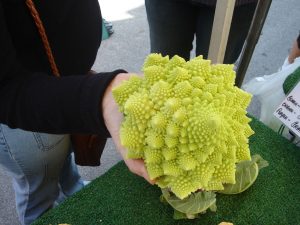The corona pandemic has birthed an outpouring of creative humor, from elaborate song parodies to simple one liners.
I have transmitted the following with great success, from appreciative smiles to outright guffaws.
“Did you hear, they have found a way to turn cauliflower into toilet paper.”
What is it about this one line that finds such an appreciative audience? What are the factors that so perfectly capture our current predicament? Here is my dissection of the required steps underlying this humor.
1. Knowledge of current hoarding of toilet paper
By now everyone is aware that toilet paper was the first item to disappear off the grocery shelves. How did this start, go viral as it were? Grocery stores across the country are now pock-marked with empty shelves. This the land of plenty, isn’t it? Americans shouldn’t have to scrap for something as prosaic as TP.
Panic buying is a universal human emotion, and if I didn’t have the good fortune of a pre-isolation Costo run, I would have stocked up the moment I saw others doing the same. But why toilet paper? My theory is that toilet paper is the very definition of a human being. Without toilet paper we’d be just another animal. Skulking at the edges of my subconscious is the possibility that we could be facing the end of days. If the world collapses around us, I want to face it clutching at least one roll of toilet paper.
The trickle-down effects of the empty shelves are interesting to consider. Proctor and Gamble was among the first to proclaim their patriotic duty by ramping up production. For years advertisers have tried to convince consumers that toilet paper is not a commodity, that theirs is gentler, softer, basically has more horsepower then the competitor’s thin, flimsy rolls. They can now pull these ads, knowing that Americans will likely buy sandpaper as long as it’s labeled toilet paper.
Requirement One:
Understand that hoarding toilet paper is an irrational, but contagious, response to the corona virus, and humor is one way to keep calm and carry on.
2. Childhood memories of cauliflower
Growing up in the 1960s, cauliflower was a demonized vegetable, pale and sickly looking, with a noxious odor as it was steamed to death. It didn’t help that “cauliflower ear” described a boxer’s brutal deformity. Cauliflower was a token vegetable on the dinner plate, something to push around, cut into pieces to make it look like you took an equally token bite. It was the rare vegetable that could not be salvaged with pads of butter. Even the dog wouldn’t eat it. Broccoli yes, you could gag that down in a pinch, but its anemic cousin, no way.
Requirement Two:
You used to hate cauliflower
3. Understanding cauliflower’s resurgence
In the past decade, cauliflower has been transformed into the darling of vegetables, escaping from the shadow of broccoli, and also escaping from the steamer. You can broil it or bake it. It is even robust enough to barbecue. There are recipes for cauliflower popcorn, cauliflower rice, and cauliflower pizza crust. If the sickly white color was the turn-off, it now comes in attractive shades of purple and orange.
The architecture of Romanesco cauliflower takes its appeal to a higher level. The multiple spirals represent a golden ratio, otherwise known as a Fibonacci number, and thus share the same aesthetically pleasing arrangement as the columns in the Greek Parthenon.
Requirement Three:
Cauliflower is more than a mere vegetable; it is the champion of repurposing. It can do anything.
4. Give yourself permission to enjoy potty humor
Well-crafted potty humor enjoys a universal appeal, across centuries, countries and cultures. Shakespeare was a noted potty-humor enthusiast, ranging from clever to raunchy, but potty humor shows up in some of the earliest recorded writing. Aristophanes, a Greek playwright writing in the 5th century BC, filled his plays with irreverent fart jokes, frequently at the expense of his nemesis Socrates. An Arabian Nights tale tells the story of Abu Hasan who flees to India in embarrassment after tooting on his wedding night. He lives for years in atonement and becomes a man of utmost sobriety and respect. Finally, he returns home but is still nervous at his reception. At an oasis on the outskirts of town, he overhears a young boy and his mother still laughing about his fart that occurred decades earlier. He flees the country never to return.
However, be advised that without this deft touch, potty humor can quickly devolve into cheap and gratuitous scatology. Timing and audience are also factors. The line between great and wretched is narrow and ever shifting, so delivering good potty humor requires nerves of steel.
Requirement Four:
This is the easiest of all. Everyone one likes potty humor and this one is well-done, well-timed and extensively field-tested.
These four factors have come together in this pandemic season to produce a joke that is perfectly specific to our communal experience. My hope is that next year the idea of cauliflower as toilet paper will make no sense. Tell the joke and you’ll get a confused and hostile stare. The timing will be all wrong, the premise even worse. What sick bastard would think that glorious, nutritious and versatile cauliflower could be mentioned in the same breath as toilet paper?
Follow Liza Blue on:
Share:




What a clever way to marry toilet paper and cauliflower in one essay! Enjoyed this one, EB!